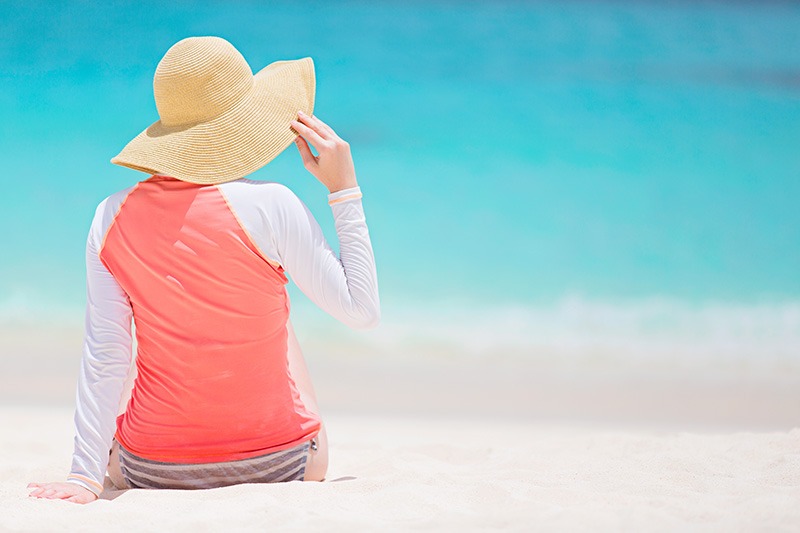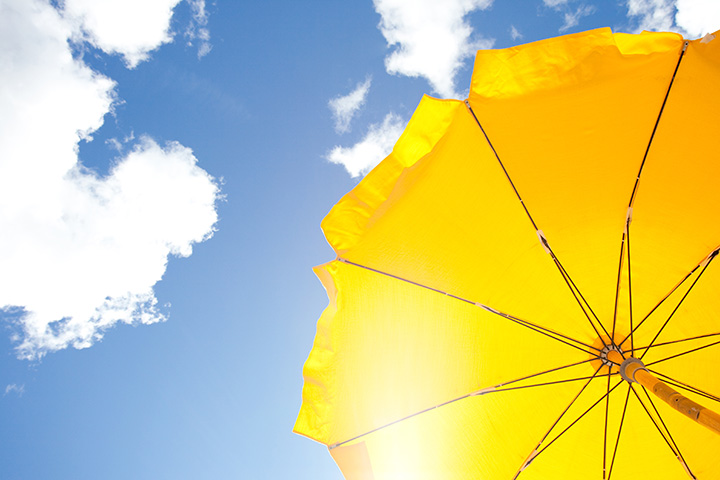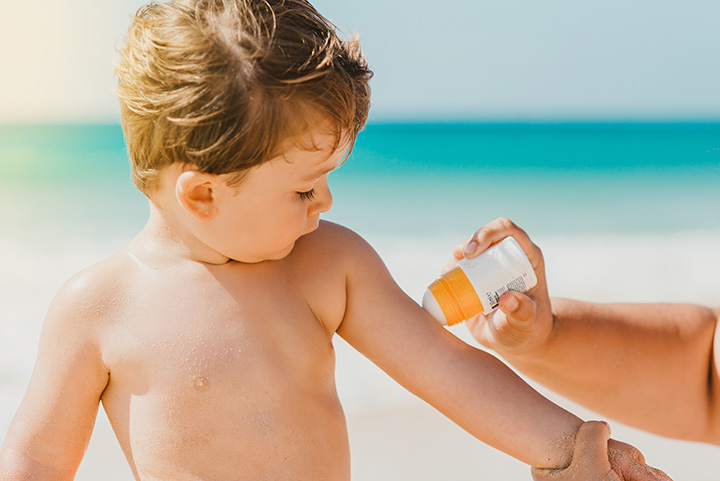
What is that spot on my skin – and what should I do about it? If you’ve ever asked yourself these questions, you’re not alone. Many of us have come across various skin spots or lesions and wondered whether they could be skin cancer. The good news is that there are steps you can take to help reduce the risk of skin cancer and keep your skin healthy.
Steps to reduce your skin cancer risk and protect your skin
Here are some simple tips to help you keep you safe:
-
- 1. Monitor your skin between checks
It’s important to be proactive and keep an eye on your skin health. Using the mnemonic ‘SCAN’ can be helpful – look for anything that is Sore, Changing, Abnormal, or New. If you notice any spots on your skin that fit these criteria and they don’t go away after six weeks, it’s always a good idea to get them checked. Early detection is key in preventing skin cancer from progressing. - 2. Have a thorough head-to-toe skin check at least once a year
Regular skin checks by a healthcare professional are essential for early detection of skin cancer. During a comprehensive head-to-toe skin check, a trained medical professional will examine your skin for any suspicious lesions. This examination will not only help detect any existing skin cancer but also provide you with a baseline assessment and identify any areas of concern. - 3. Personal risk assessment and monitoring plan
When you have a skin check, you should also receive a personal risk assessment. This assessment takes into account various factors such as your family history, personal history, and individual risk factors. Based on this assessment, a monitoring plan can be created to determine how often you should have a skin check. This personalised approach ensures that your individual and specific needs are addressed and that you receive the appropriate level of care. - 4. More frequent skin checks for high-risk individuals
If you have many moles, visibly sun-damaged skin, or a personal or close family history of skin cancer, it is recommended to have skin checks more frequently. These individuals are at a higher risk for developing skin cancer and require more frequent monitoring and examination. Regular skin checks can help detect any changes or abnormalities early on, allowing for timely intervention and treatment if necessary.
- 1. Monitor your skin between checks

- 5. Shield your skin from harmful rays
When it comes to reducing the risk of skin cancer, sun protection plays a vital role. Shielding your skin from the harmful rays of the sun is an important step in maintaining your skin health and preventing sun damage. Here are some important practices to incorporate into your sun protection routine:
- Wear a wide brim hat: Covering your head with a wide-brimmed hat offers additional protection to your face, ears, and neck – areas that are often exposed to the sun’s rays. This simple accessory can help shield your skin from direct sunlight, reducing the risk of sunburn and the sun exposure that leads to skin cancer. Opt for hats made from tightly woven fabrics to provide maximum protection
- Wear sun protective clothing: Look for clothing that carries a UPF (Ultraviolet Protection Factor) rating. Specially designed to block exposure to ultraviolet (UV) rays, this clothing offers an additional layer of defence. These garments undergo rigorous testing to determine their UV blocking capabilities, ensuring that they provide reliable protection against the sun’s rays. Fabrics with a tighter weave, provide better protection by minimising the amount of UV radiation reaching your skin.
- Apply sunscreen: Applying sunscreen is a crucial step in protecting your skin from the sun’s harmful rays. Choose a broad-spectrum sunscreen with a Sun Protection Factor (SPF) of at least 30 or higher. Apply it generously to all exposed areas of your skin, including your face, neck, arms, and legs. Be sure to apply it every morning and reapply every two hours or more frequently if you have been when out for longer periods swimming or sweating excessively. Remember, sunscreen should be a year-round habit, as the sun’s rays can still be harmful even on cloudy days.

- Avoid tanning beds: Stepping into a tanning bed may seem like a quick way to achieve a sun-kissed glow, but it comes with serious risks. Tanning beds emit harmful ultraviolet (UV) radiation, which damages the skin and significantly increases the risk of developing skin cancer. Avoid these artificial sources of UV radiation altogether and opt for safer alternatives, such as sunless tanning products, to maintain a bronzed appearance without compromising your skin’s health.
It’s important to note that good cancer care is not about constantly worrying about your skin, but rather knowing your risk, taking steps to reduce that risk, and addressing any potential problems early. Regular mole checks and skin checks, self-monitoring, and adopting sun-safe practices are crucial in maintaining a healthy and cancer-free skin.
Read more: The difference between skin checks and mole mapping
At SunLife, we are committed to providing comprehensive skin care services, using advanced technology such as 3D Total Body Photography and offering personalised care plans. Our team of experienced healthcare professionals will ensure that you receive thorough skin checks, personalised risk assessments, and the necessary guidance to reduce your risk of skin cancer. We believe in offering peace of mind by prioritising your individual care and wellbeing.
Remember, taking care of your skin is an important part of your overall health. By being proactive and prioritising regular skin checks, you can help protect yourself against skin cancer and ensure the long-term health of your skin. Stay safe and stay sun-aware!
